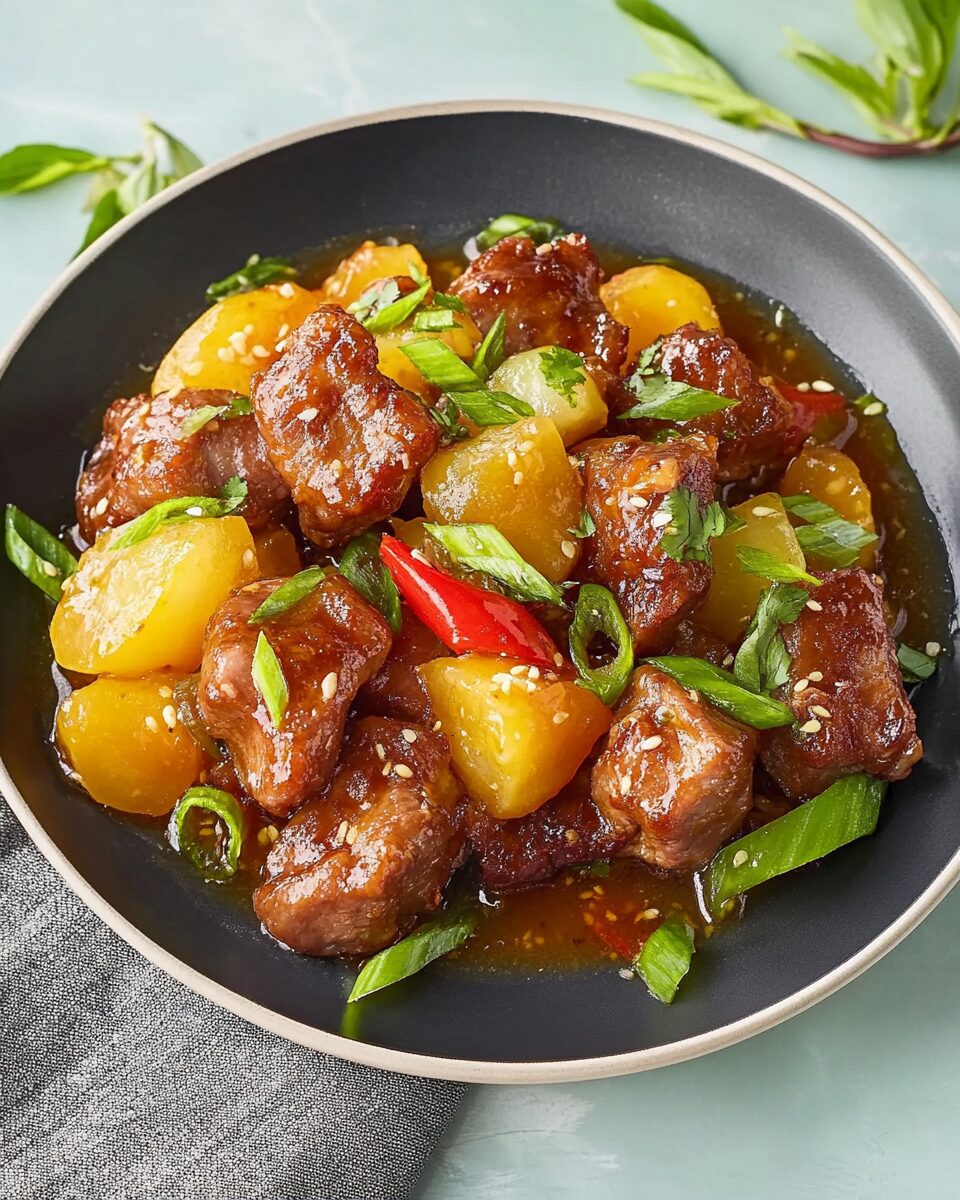Exploring the Culinary Delight of Sweet and Sour Pork
Sweet and Sour Pork is one of the most iconic dishes in Chinese cuisine, celebrated for its perfect balance of flavors and vibrant presentation. This dish effortlessly combines crispy, golden-fried pork with a tangy-sweet sauce, colorful vegetables, and juicy pineapple. Its universal appeal has made it a favorite on dinner tables worldwide, from bustling Chinese restaurants to cozy family kitchens. In this article, we’ll delve deeper into the origins, cultural significance, variations, and tips for making this classic dish truly special.
A Brief History of Sweet and Sour Pork
The origins of Sweet and Sour Pork can be traced back to Guangdong province in southern China. This region is known for its Cantonese cuisine, which emphasizes fresh ingredients and harmonious flavor profiles. The sweet-and-sour cooking style evolved from the use of vinegar and sugar in traditional Chinese recipes, a technique used to create a balanced flavor that pleases the palate. Over time, this dish spread beyond Guangdong, becoming a staple in Chinese-American cuisine and other global adaptations.
The addition of pineapple, now considered a signature ingredient, was likely introduced to cater to Western tastes during the dish’s international journey. This tropical twist added a layer of sweetness and a juicy texture that complements the crispy pork, solidifying its place in fusion cuisines.
What Makes Sweet and Sour Pork Irresistible?
- Flavor Harmony: The standout feature of Sweet and Sour Pork is its perfect balance of flavors. The tanginess from the apple cider vinegar and the sweetness from sugar and pineapple come together in a sauce that coats every piece of pork and vegetable evenly. This interplay of flavors keeps every bite exciting.
- Textural Contrast: The crispiness of the fried pork contrasts beautifully with the tenderness of the vegetables and the juiciness of the pineapple. The combination of textures adds depth to the dish, making it both comforting and intriguing.
- Visual Appeal: Sweet and Sour Pork is as much a feast for the eyes as it is for the palate. The bright colors of bell peppers, celery, onions, and pineapple chunks create a vibrant dish that is sure to impress at any gathering.
- Adaptability: While the traditional recipe is a classic, Sweet and Sour Pork is versatile. You can experiment with different proteins, like chicken or tofu, or add seasonal vegetables for a personal twist. This adaptability makes it suitable for various dietary preferences and occasions.
Cooking Techniques for the Best Results
Achieving restaurant quality Sweet and Sour Pork at home is all about mastering a few key techniques:
- Marinating the Pork: Marinating the pork with soy sauce, sugar, and egg white infuses it with flavor and creates a velvety texture. The marinade also helps the cornstarch adhere to the meat, ensuring a crispy exterior after frying.
- Proper Frying: The pork should be fried at the right temperature (around 365°F or 185°C) to achieve a golden-brown crust without absorbing too much oil. Using a thermometer ensures consistent results.
- Balancing the Sauce: The sauce is the heart of this dish, so achieving the perfect sweet-and-sour ratio is crucial. Adjust the sugar and vinegar to suit your taste preferences, and use pineapple juice to enhance the flavor.
- Timing the Vegetables: Overcooking the vegetables can cause them to lose their vibrant color and crunch. Stir fry them just until tender to maintain their freshness and texture.
Variations and Serving Suggestions
Sweet and Sour Pork has inspired countless variations worldwide. In addition to the traditional recipe, here are some creative takes on this classic:
- Protein Swaps: Replace pork with chicken, shrimp, or tofu for a different take. These alternatives work just as well with the tangy-sweet sauce.
- Low-Calorie Version: Skip the deep frying and stir fry the pork instead for a healthier option. While the texture will differ, the flavors remain just as delicious.
- Fusion Creations: Incorporate elements from other cuisines, like adding a dash of chili for a spicy kick or sprinkling toasted sesame seeds for a nutty aroma.
- Vegetarian Sweet and Sour: Create a plant-based version using tofu or tempeh and an assortment of vegetables, such as zucchini, mushrooms, and carrots.
For serving, Sweet and Sour Pork is traditionally paired with steamed white rice to soak up the flavorful sauce. For a heartier meal, try serving it alongside fried rice or noodles. If you’re hosting a dinner party, consider presenting it as part of a larger spread with other Chinese favorites like dumplings or egg rolls.
The Global Appeal of Sweet and Sour Pork
The universal popularity of Sweet and Sour Pork is a testament to its timeless appeal. Its vibrant flavors and versatility make it a dish that transcends cultural boundaries. In Western countries, it’s often featured as a centerpiece in Chinese takeout menus, while in Asia, it’s a beloved family dish that brings people together around the dinner table.
This adaptability has also made it a frequent subject of culinary experimentation. Home cooks and chefs alike enjoy reimagining Sweet and Sour Pork with regional ingredients, creating unique versions that reflect their local food cultures.
Conclusion: A Dish Worth Celebrating
Sweet and Sour Pork is more than just a recipe; it’s a culinary journey that showcases the beauty of balance, the joy of vibrant flavors, and the creativity of fusion cooking. Whether you’re recreating the traditional Cantonese version or putting your own spin on it, this dish is sure to bring delight to anyone who tastes it.
With its rich history, appealing flavors, and endless possibilities for customization, Sweet and Sour Pork is a must-have recipe in every cook’s repertoire. Serve it at your next gathering, and watch as it becomes an instant favorite among friends and family.






